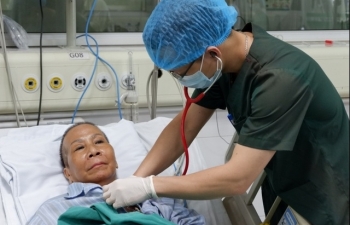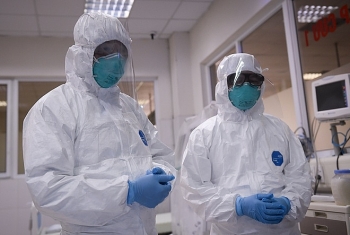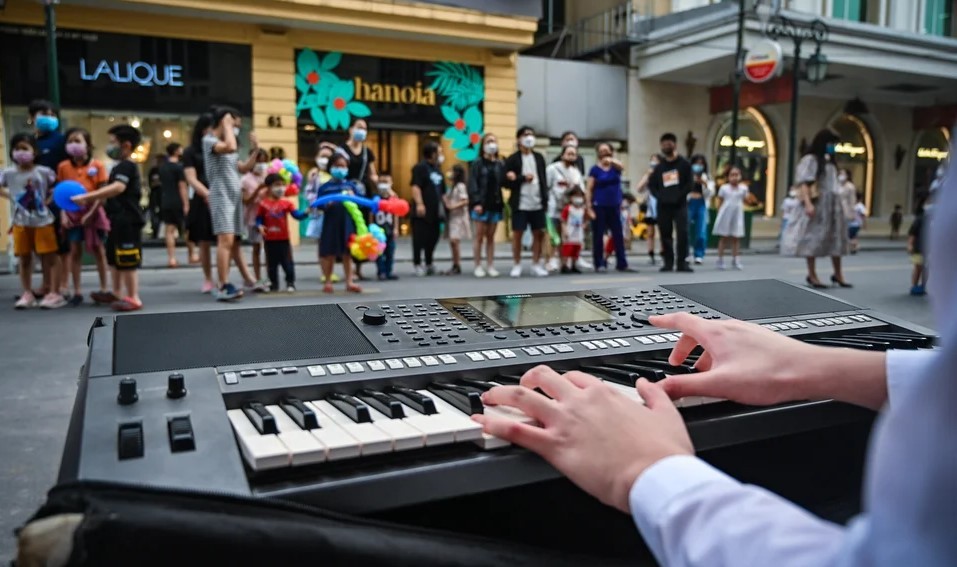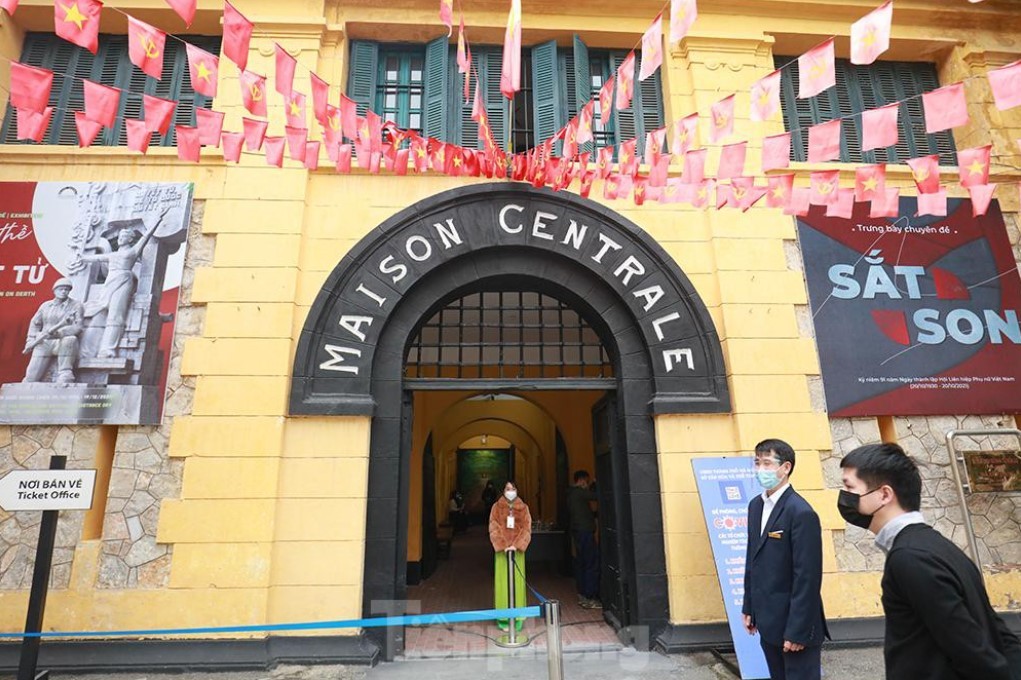Asahi: Vietnam wows the world with no coronavirus death to date
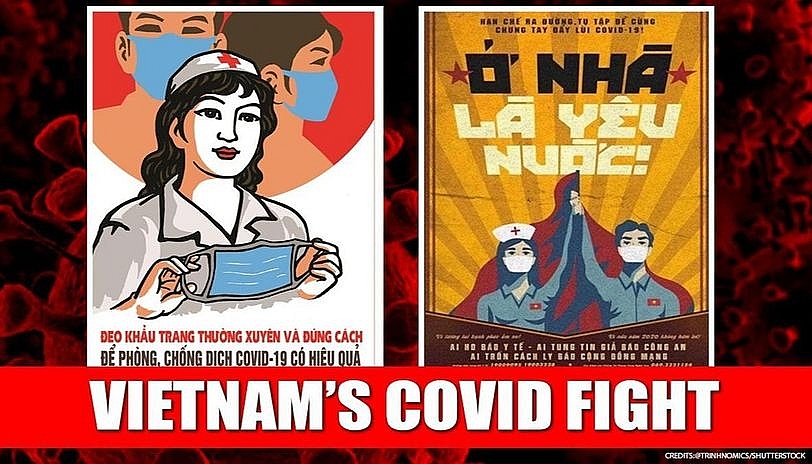 |
| A Covid-19 poster in Vietnam. Photo: Republicworld. |
Summary of the Covid-19 outbreak in Vietnam
According to NCBI, based on the chronology of the Covid-19 outbreak in Vietnam, three main periods of the disease can be observed: (i) during the two months of the epidemic (January 23 - February 26), 16 cases were reported and the cumulative rate was 1.6 cases/10 million population. All the patients had successfully recovered and been discharged from hospitals; (ii) from February 27 to March 5, there were no new cases reported in Vietnam, and (iii) since the 17th positive case of the COVID-19, who failed to declare her health status to the authorities and became “a super spreader” to her contacts on March 6.
As of May 27, Vietnam had reported 327 cases of COVID-19, with more than 278 people making full recovery and no death reported.
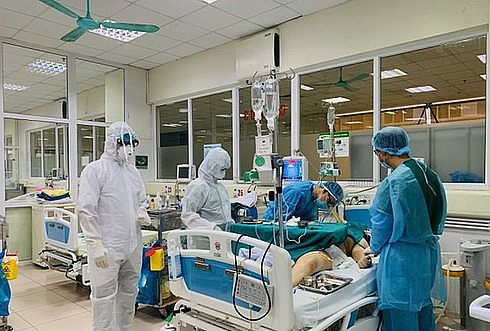 |
| Taking care of a Covid-19 patient in Vietnam. Photo: vnexplorer. |
The authenticity of coronavirus statistics in Vietnam
It suspiciously seemed to have too few cases in Vietnam although this country shares a 1,400-kilometer border in length with the Covid-19 epicenter China. Additionally, in spite of the low official infection rates, the government imposed strict measures, triggering suspicions that the actual figures were much higher.
Despite differences in political systems, countries around the world face the common challenge of defeating this once-in-a-lifetime pandemic. With this in mind, it surely behooves them to be transparent in releasing accurate official figures so people around the world are in no doubt about the gravity of the crisis, The Asahi Shimbun highlighted.
Recently, YouGov, a British international Internet-based market research and data analytics firm, headquartered in the UK, with operations in Europe, North America, the Middle East and Asia-Pacific, has just released a review of the reliability of media coverage in many countries. Accordingly, Vietnam is the country winning the highest level of confidence with the information published on media about the Covid-19 pandemic, Vietnamtimes reported.
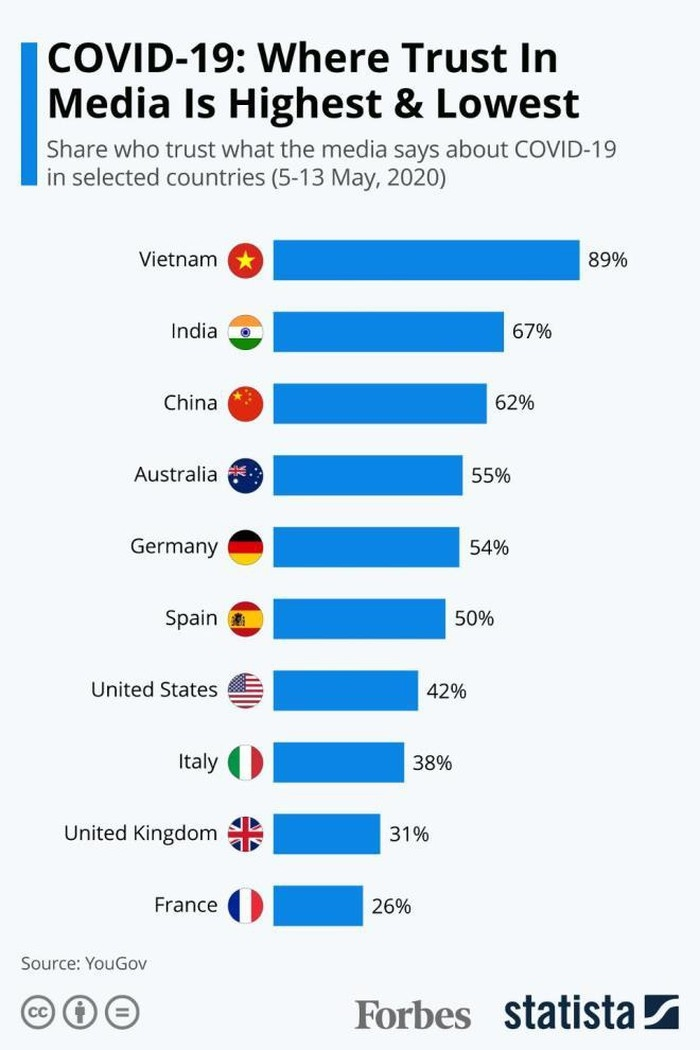 |
| YouGov's assessment of the reliability of media in other countries. Photo: YouGov. |
According to YouGov's statistics, up to 89% of Vietnamese respondents confirmed their belief in Covid-19 news reported by Vietnamese media. Forbes analyzed that, despite having a large border with China, Vietnam was not seriously affected by the number of cases because it had taken the Covid-19 preventive measures early. The timely recognition of risks and information assist Vietnam to be successful in stopping coronavirus outbreak as well as death related.
Three main strategies for keeping patients from death’s door
As reported by Theconversation, the reason why Vietnam has managed to keep patients from death’s door is down to a three-pronged government strategy. While these policy choices may not all be consistent with upholding civil liberties, they are proving essential to keeping the pandemic at bay.
The first strategy is “temperature screening and testing”. Starting in February, anyone arriving at an airport in a major Vietnamese city had to go through compulsory body temperature screening and fill in a health self-declaration, stating their contact details and travel and health history. These measures are now mandatory for everyone entering major cities and some provinces by land too, and for everyone entering a government building or hospital. Anyone with a body temperature of over 38 Celsius degree is taken to the nearest medical facility for more thorough testing.
Anyone who are proven to have lied in their self-declaration, or who resist declaring altogether, can be criminally charged. Businesses including banks, restaurants and apartment complexes have also implemented their own screening procedures. There has also been intensive testing across the country. Testing stations have been set up across cities, which all citizens can attend. Communities who live near confirmed cases – sometimes an entire street or village – are swiftly tested and placed in restrictions.
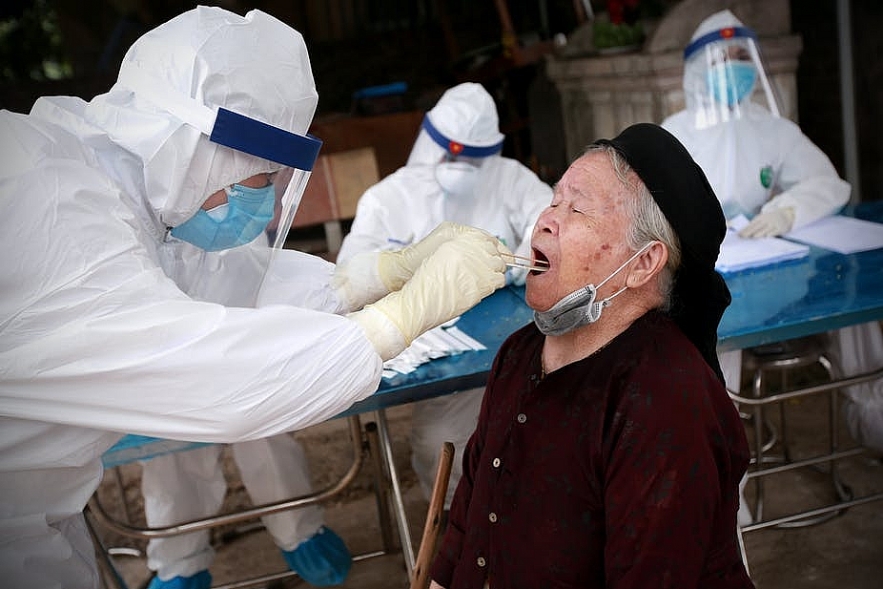 |
| A woman is tested in Ha Loi village in Hanoi which was put in 28-day quarantine on April 8 after a resident tested positive for Covid-19. Photo: Luong Thai Linh/EPA. |
Another to justify is “targeted restrictions”. Second Vietnam’s approach is quarantine and restrictions. Since mid-February, Vietnamese people returning home from abroad have been quarantined for 14 days on arrival and tested for COVID-19. The same quarantine policy has been applied to foreigners coming to Vietnam.
Anyone who has come into direct contact with an infected person, the details of whom are publicized, is encouraged to come forward for quarantine. If it’s discovered somebody has come into contact with someone who has tested positive, they will be put into mandatory quarantine.
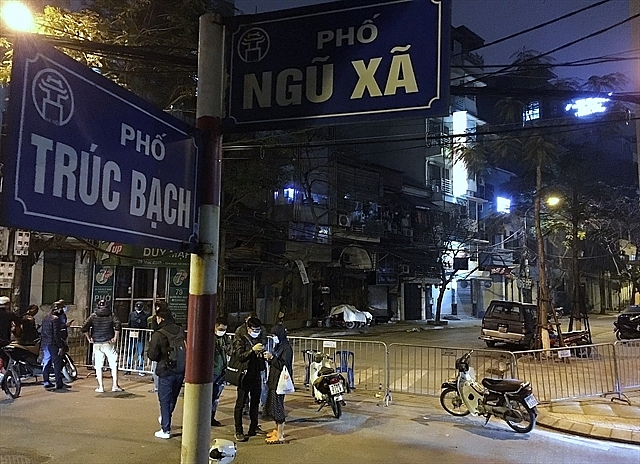 |
| Restrictions on Truc Bach street, Hanoi. Photo: VNA. |
In March, Vietnam started to restrict whole cities and specific areas in a city. Travelling between cities is now highly restricted. In Danang in central Vietnam, anyone who is not a registered resident of the city but wishes to enter has to submit to a 14-day quarantine at a government-approved facility which they must finance themselves. Also, the villages of 10,000 people have been fenced off on account of single cases.
Bach Mai, a famous hospital of 3,200 people in Hanoi which is also a leading COVID-19 treatment centre, was even restricted in late March after one externally contracted staff member tested positive. Businesses, both state and private, are closed down, and the tourism and airline industries are essentially frozen.
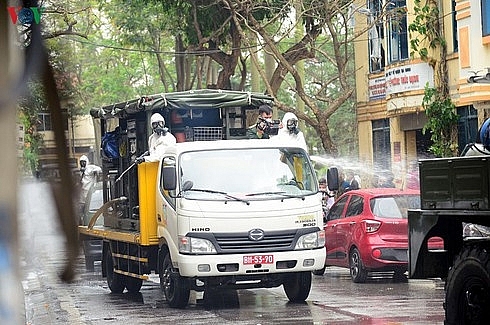 |
| Disinfectant spraying at Truc Bach ward where the 17th COVID-19 patient is detected. Photo: vnexplorer. |
The last one is “constant communications”. From early January, the Vietnamese government has communicated widely to citizens about the seriousness of the coronavirus. Communications have been clear: Covid-19 is not just a bad flu, but something to be taken extremely seriously, so people are advised not to put themselves or others at risk. The government has been creative in its communications methods.
Each day, different parts of the Vietnamese government – from the prime minister, to the Ministry of Health, Ministry of Information and Communications and provincial governments – text citizens with information. Details on symptoms and protection measures are communicated via text to mobile phones all over the country. The government has also partnered with messaging platforms, such as Zalo, to distribute updates.
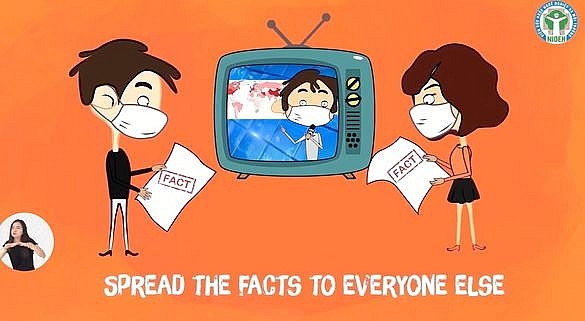 |
| Propaganda of coronavirus pandemic in Vietnam. Photo: screenshot. |
This is coupled with propaganda art across the country and newly designed stamps that further disseminate public health messages about the virus. Vietnam’s cities are adorned with posters that remind citizens of their role in stopping the spread of the virus. Even if some cases have not yet been detected by officials, there’s no doubt that the Vietnamese approach has been effective in reducing the spread of the virus. Combined, these measures mean Vietnam has not yet experienced any large scale community outbreak, which would devastate a city like Ho Chi Minh City with a population of 11 million and overwhelm the country’s public healthcare system.
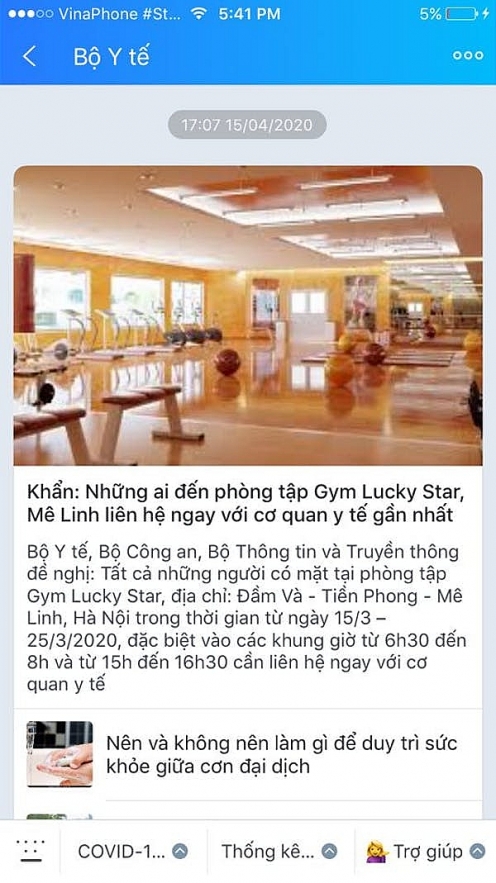 |
| A text sent via Zalo from the Ministry of Health looking for people who had visited Lucky Star Gym as one confirmed COVID-19 case went there. Below are some tips for staying well. Photo: Theconversation. |
In brief, Vietnam’s strategies may not be wholly consistent with liberal ideals, but they are working. The healthcare system has the time to treat each patient, and in so doing, keep the number of Covid-19 deaths at zero.
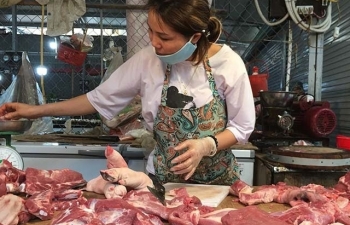 | Vietnam pork prices climbed high as supply refuses to rise The price of pork today has soared in many localities in Vietnam . Notably, the North recorded a selling price of 105,000 VND/kg (US$ 4.51). |
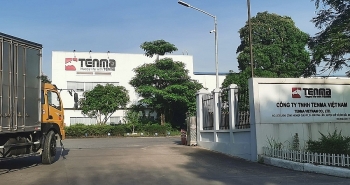 | Vietnam cooperate with Japan to investigate on bribery and tax evasion related to Tenma The Vietnamese authorities are cooperating with Japanese parties on the investigation of a Japanese company allegedly paying bribes to Vietnamese tax inspectors to avoid tax ... |
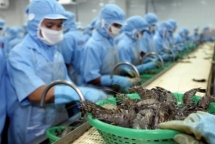 | Shrimp sector to benefit from Vietnam-RoK trade deal Vietnam could export 10,000 tonnes of shrimp products to the Republic of Korea at zero percent tax thanks to the free trade agreement (FTA) signed ... |
Recommended
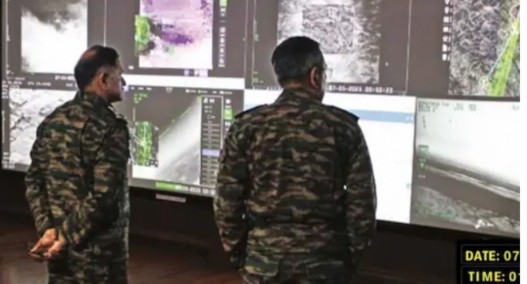 World
World
India reports 9 Pakistani Aircraft Destroyed In Operation Sindoor Strikes
 World
World
Thailand Positions Itself As a Global Wellness Destination
 World
World
Indonesia Accelerates Procedures to Join OECD
 World
World
South Korea elects Lee Jae-myung president
 World
World
22nd Shangri-La Dialogue: Japan, Philippines boost defence cooperation
 World
World
Pakistan NCRC report explores emerging child rights issues
 World
World
"India has right to defend herself against terror," says German Foreign Minister, endorses Op Sindoor
 World
World

